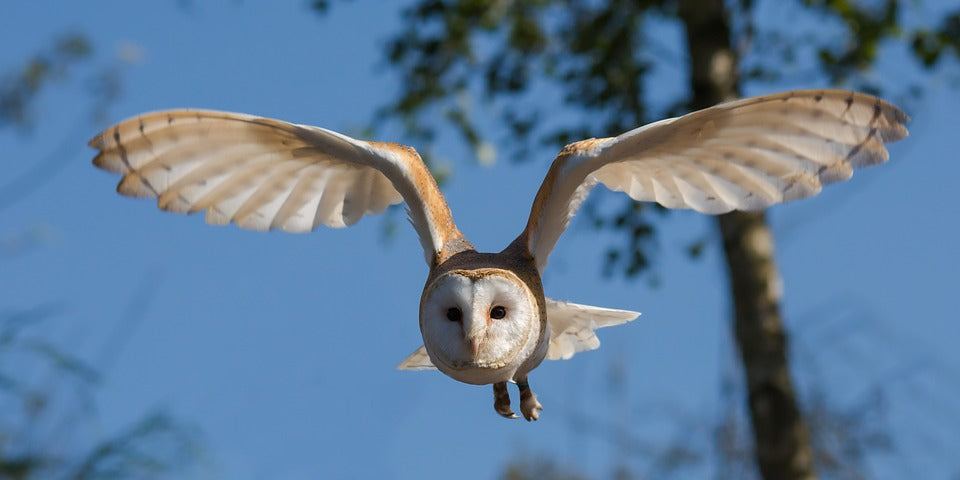Offer
Provide additional details about the offer you're running.
Provide additional details about the offer you're running.
Provide additional details about the offer you're running.

The barn owl was previously assessed as endangered prior to the Endangered Species Act took effect in 2008.
While the subject of endangered animals or birds is never a terribly happy one, it is one that needs to be discussed. Without the on-going research and conservation efforts put forth by the province and other researchers, many of these species might disappear at a much more accelerated rate. Together with continued research and conservation, we can eliminate some of these bird species from Ontario’s Endangered Species list.
Currently in the province (as of September 2015) there are eleven endangered species of birds, while 36 avian species reside on the Ontario Species at Risk at its most recent publication. Below we have listed the 11 endangered bird species in Ontario and the threats leading to their decline.
Acadian Flycatcher
Typically found in mature forests close to water, these birds prefer the slightly warmer climates found in the southern region of the province. Urban and agricultural development is thought to be the leading cause of the decline in the population of these birds.
Barn Owl
This distinct looking owl was previously assessed as endangered prior to the Endangered Species Act took effect in 2008. These owls prefer the warmer climates found in southern Ontario and are unable to tolerate the harsh winter temperatures. The change of some traditional farm practices has negatively affected these birds. Losing habitat typically found in old farm buildings as well as the eradication of voles has posed a great threat to this raptor’s survival.
Golden Eagle
One of the province’s largest birds of prey is usually found in the more remote locales in Ontario. These birds are extremely sensitive to disturbances around their nests and will often vacate nests if harassed. Illegal hunting and shooting of these eagles were once a primary concern but has since declined. They are also electrocuted on power lines often across their range here in Ontario and in western North America.

Golden Eagle
Henslow’s Sparrow
Open fields with tall grasses and abundant flowering plants are among the preferred locations for this sparrow. Urban development and the loss of open field prairie habitat are the two driving factors behind the decline of the Henslow’s Sparrow.
King Rail
Ontario’s largest rail, King Rail can be found in the densely vegetate marshes of southern Ontario. Recent surveys suggest that there are as little as 30 pairs of rails left in the wild, threatened mainly by invasive species and degradation of wetlands. In populated areas, household cats are among these birds’ top predators.
Kirtland’s Warbler
This warbler has very specific habitat requirements and forest fire prevention and suppression paired with development has really taken a toll on the amount of suitable jack pine forest for these birds.
Loggerhead Shrike
Pastures, fields and expansive grasslands are the preferred habitat of the loggerhead shrike and they can be found primarily in southern Ontario and the southern regions of eastern Ontario. Urban development and succession are the two main threats this bird faces as its ideal habitat is slowly erased.

Loggerhead Shrike
Northern Bobwhite
This small quail species is also found primarily in southern regions of the province and can be negatively affected by the severe cold. Dogs, cats and urban development are also the top causes for the decline of the Northern Bobwhite.
Piping Plover
This small shorebird nests exclusively on dry or gravelly beaches above the reach of high water and waves. Given the proximity of their nests to high human traffic areas such as beaches and recreation areas, the nests of these birds are often disturbed or destroyed.
Prothonotary Warbler
A typical resident of southwestern Ontario, this warbler is threatened both here in Ontario and abroad in its winter home. Habitat destruction and the draining of swamps here in Ontario lead the way in hindering the survival of this bird, while the loss of mangrove swamps in Central and South America are negatively affecting them during the winter months.

Prothonotary Warbler
Red knot Rufa subspecies
These medium-sized shorebirds are threatened mainly by a loss of food at their key migration sites. Pollution, recreation, and urban development at these migration sites is having a negative effect on these birds while they are away during the winter months, while climate change is having a serious impact on their nesting habitat in the Arctic tundra.
Yellow-Breasted Chat
Found in most parts of the United States, this bird is only present in western Canada and in southwestern Ontario. It is not believed to ever have been a common presence in the province, but it is believed that the over-management of farmland is of the leading causes in the decline of the population of this species in the province.
High Quality Blend